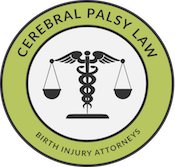What Are Augmentative and Alternative Communications Systems (AACs)?
Augmentative and Alternative Communication systems (sometimes called assistive communication devices) encompass a broad category of adaptive tasks or communication systems that can be used by individuals with difficulty speaking, including some individuals with cerebral palsy. These communication systems allow individuals who have difficulty with speech to still productively express themselves, using either unaided or aided systems.
What Are Unaided AACS?
Some individuals who have cerebral palsy or other conditions that make it difficult to speak can nonetheless express themselves using sign language, body language, gestures, In cases where they can communicate without the use of other external devices, these are called unaided AACs.
What Are Aided AACs?
Aided AACs use the elements of unaided AACs but have an assistive component to them. This can be as simple as a paper and pencil to more sophisticated and complex assistive systems like eye-tracking or voice synthesizers.
- Non-Electronic AACs: Some of the oldest Augmentative and Alternative Communications systems include items like communication boards, which contain symbols, pictures, or phrases that a child can pick from in order to communicate. Users can indicate particular items using their eye gaze, point, or a mouth/head stick. Communication grids work similarly, providing the child with a preset selection of items from which they can choose to build thoughts or sentences.
- Technological AACs: Other assistive devices and programs (which are rapidly becoming more ubiquitous) include tablet and smartphone apps that work similarly to communication boards but allow for a greater range of items to be presented. Some methods also allow speech generation, where children select certain items and the device generates speech based on their choice. For those who may have motor difficulties, cutting-edge eye tracking is available through such firms as Tobii or EyeGaze. Low-cost applications for mobile devices have recently expanded the selection of low-cost methods available for allowing children with cerebral palsy and speech-related difficulties to communicate.
How Do I Know Which Augmentative and Alternative Communication System is the Best One to Use?
Each child has a unique and varying set of abilities and limitations. It is important to invest in a system that works for that child’s particular needs and abilities. There is no one universal communication aid that is right for any particular child. Because this is a complex decision, we have included some resources to help you make this decision:
- Practical AAC provides a rubric for evaluating the effectiveness of a particular AAC program.
- They also provide a listing of free and lite versions of existing AAC software.
- CALL Scotland provides a listing of AAC applications based on necessary functionality and interface type.
- Spectronics provides reviews of AAC software. This organization is Australia’s largest supplier of special needs software and assistive technologies.
Contact Michigan Cerebral Palsy Attorneys for a Free Case Evaluation
Navigating the complex field of birth injury can be a confusing and harrowing process for the caregivers of children with developmental disabilities. Understanding the medical options available to assist your child in maintaining a healthy and happy life is already hard, but navigating the legal process to ensure your child is well-cared-for throughout their lifespan is even more difficult. Handling such complex cases requires a law firm that focuses exclusively and solely on birth injury and nothing else. Our firm would be happy to speak with you to evaluate your case; we can be contacted by phone (1-844-272-8891), Live Chat (by pressing the large tab on the left side of the screen), or by using our simple contact form.
